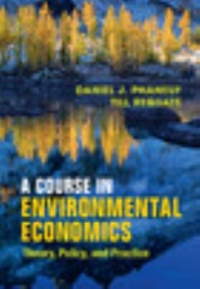Question
You will need to type out answers to these questions, and then upload them to Gradescope by cutting and pasting each set of questions into
You will need to type out answers to these questions, and then upload them to Gradescope
by cutting and pasting each set of questions into an answer box there.
A deadly wildfire in November 2018, named the CampFire, caused many deaths, destroyed
thousands of structures, and burned 150,000 acres. The fire led to a tragic loss of life, as well as
the near entire destruction of two communities, Paradise and Concow.
The utility PG&E was deemed to have responsibility for the ignition of the fire. This means that
Those damaged by the fire have a legal claim to compensation from PG&E. (The size of potential liabilities from this and other wildfires pushed the utility into bankruptcy.)
To assess the size of such compensation payments, as well as other penalties that might be
assessed by government agencies, courts need to decide on the value of the damages caused.
This exercise asks you to contemplate the valuation techniques discussed in our course with
respect to this case.
- Before you read anything more about the CampFire, I want you to think about what
the different costs of the fire were, and how big you'd expect each of them to be.
(Imagine that you are hired as an economist by the government, which is prosecuting
PG&E, and your job is to make sure that the government contemplates all possible costs
that they might want to include.)
- Make a list of all the different costs that you can think of that you might want to add up to get a total cost. (3 points)
- Again, before you ny reading or research, ask yourself which of these costs are going to be the largest. Identify what you think the three biggest cost categories will be. List those three, and put down your guess as to what percentage of the total costs would be associated with each category. (1 point)
- After you have completed the items (a) and (b), read some background material on the CampFire (Wikipedia is fine; there is a Frontline documentary; there is extensive media coverage; and insurance company analysis of damages offers empirical estimates.) Then, write 3 to 4 sentences saying what surprised you about the size and components of damages. (2 points)
Note on grading: we will not grade this question for correctness. If you complete the items
above and demonstrate some effort, you will get full credit. But, if you take it seriously,
including doing (a) and (b) before you ny background reading, you will learn much more
from this exercise.
- The most dramatic and tragic aspect of the fire was the loss of human life. In class we discussed using the Value of a Statistical Life to put a dollar value on risks to human life. The federal EPA has a suggested estimate of the VSL that it recommends agencies use in valuation.https://www.epa.gov/environmental-economics/mortality-risk-valuation
- Find the EPA's preferred estimate of the VSL; find the number of deaths reported as directly caused by the Camp Fire; and use those numbers to calculate an estimate of the value of lost life from the Camp Fire. Show your calculation. (1 point) (There may be some ambiguity about specific values, so we will award full score to things that are in a reasonable range. You can use the CPI to update dollar values to 2018.)
- Is this a good estimate of the cost to society from lives lost during the Camp Fire incident? Explain why or why not. (120 word limit) (2 points) (For example, you may wish to argue that the VSL is not the right concept. Or, you may wish to recommend tweaks to the EPA's number. Or, you may wish to argue that this is exactly the relevant number.)
- In recent years, the salience of wildfire risk has changed dramatically in California. That is, many people are suddenly more aware of and concerned about wildfire risk. This suggests the possibility of getting a hedonic estimate of individual concern about wildfire risk by looking at housing price changes.
- Suppose we wanted to follow the model of the Davis paper on cancer clusters discussed in class. Describe the four home price values that you would want to collect in order to perform an analogous hedonic estimate related to the change in perceived wildfire risk in Northern California. (That is, suppose we are going to get an estimate using the mean home price from four groups of homes; what would those four groups be in order to follow the model of the Davis paper?) (2 points)
- Another valuation method we discussed is analysis of defensive expenditures.
- What defensive expenditures might have been deployed in response to the increase in wildfire activities? List all that you can think of. (2 points)
- Suppose that you had a complete accounting of all expenditures every year for the last twenty years in Northern California in each of these categories. Would the change in expenditures over time represent a good estimate of the total cost of the increase in wildfires? Explain why or why not briefly. (50 word limit; this can be quite brief.) (2 points)
Step by Step Solution
There are 3 Steps involved in it
Step: 1

Get Instant Access to Expert-Tailored Solutions
See step-by-step solutions with expert insights and AI powered tools for academic success
Step: 2

Step: 3

Ace Your Homework with AI
Get the answers you need in no time with our AI-driven, step-by-step assistance
Get Started


